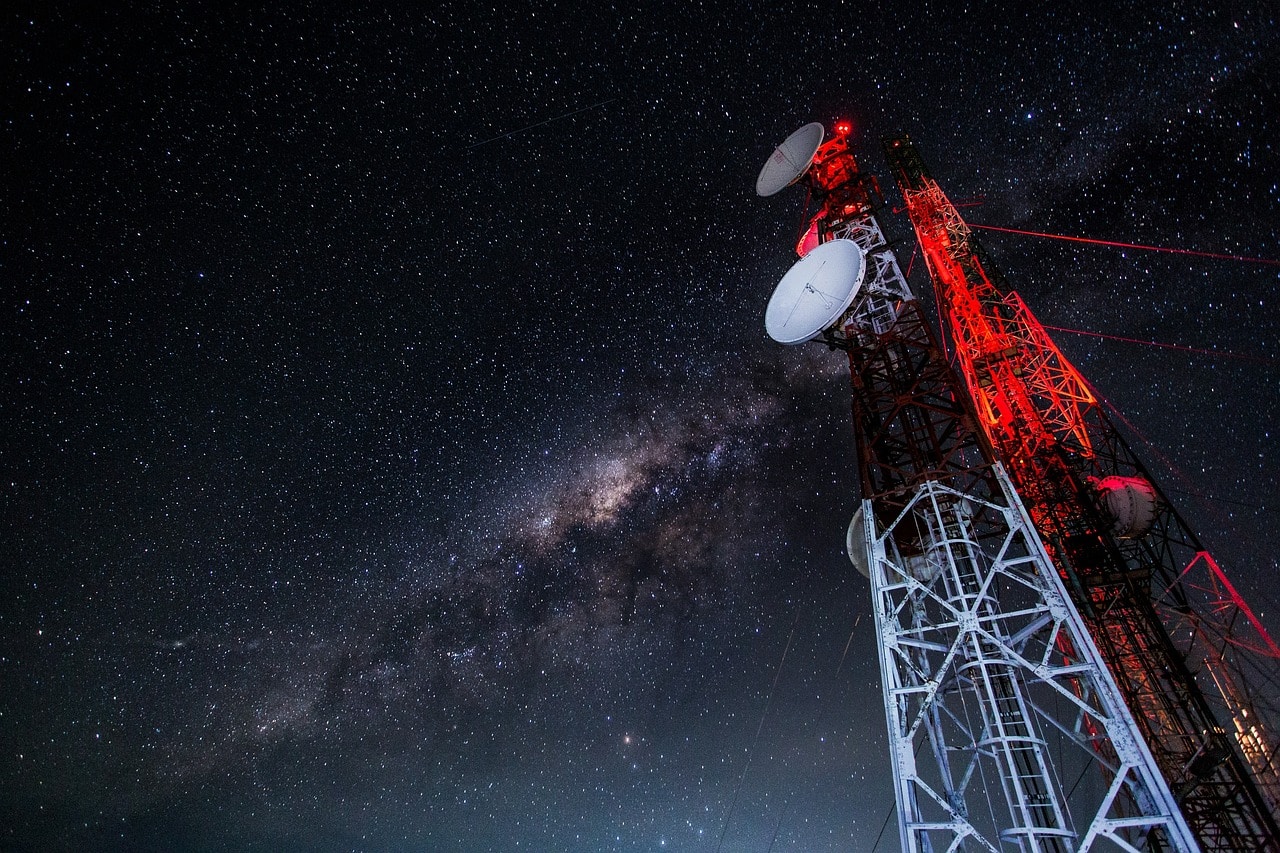
Radio antennas transmit sound using electromagnetic waves.
Radiophony is the transmission of sounds through electromagnetic waves . This term is formed with the word radio (in its meaning as radio broadcasting : "the open transmission of sound content through Hercian waves") and phōnía , from Greek, (which translates as "sound" ).
electromagnetic waves
In the case of radio, sound is transmitted by electromagnetic (or Hercian ) waves . These waves involve the propagation through space of electromagnetic fields that are produced by moving electric charges.
Electromagnetic waves are oscillatory disturbances composed of electric and magnetic fields that vary perpendicular to each other and in the direction of propagation. They cover a wide spectrum, from low-frequency waves, such as radio, to high-frequency waves, such as gamma rays. Each type of electromagnetic wave is characterized by its frequency and length. Those with higher frequency have shorter lengths and vice versa.
It must be taken into account that a sound is a mechanical vibration that propagates through an elastic medium (such as air). The sensation that is generated in the ear from the vibrating movement of a body is also called sound.
Media
Beyond technical and scientific issues, the idea of radio usually refers to the activity of radio as a means of communication . Radio, therefore, is linked to radio broadcasting (the broadcast of radio programs) and involves the existence of radio stations that transmit their content so that listeners can receive it on their radio receivers (devices that capture and convert waves into signals). ).
Through radio, the population has access to news and music , can listen to live sports or cultural broadcasts and even enjoy works of fiction (such as radio plays ). Since the development of the Internet , radio remained a social practice or activity, but it changed technically since the signals that are transmitted and received are often digital .
History of radio
The history of radio, also known as radio broadcasting, dates back to the late 19th century and early 20th century , when several inventors and scientists worked on developing technologies to transmit and receive radio signals . One of the important milestones in the history of radio was the discovery of electromagnetic waves by James Clerk Maxwell in the 1860s. His theories provided the basis for understanding the propagation of radio waves .
In 1895, Guglielmo Marconi conducted experiments and managed to send radio signals over increasingly greater distances. His work laid the foundation for wireless transmission and established the foundations of radio communication . In 1906, Reginald Fessenden , a Canadian engineer and inventor, made the first human voice radio transmission. This historical event consisted of a brief sequence of words and music that could be heard by several ships in the Atlantic Ocean.

Radio emerged at the end of the 19th century.
Radio began to expand rapidly in the 1920s, with the establishment of commercial radio stations and the broadcasting of entertainment, news and music programs . Radio became a popular form of communication and entertainment in homes around the world. In the following decades, important technological advances were made, such as the development of shortwave radio and FM (frequency modulated) radio. These improvements allowed for higher sound quality and a greater number of available channels.
In the second half of the 20th century, this technology continued to evolve with the advent of digital radio and the arrival of Internet radio. This allowed for a greater variety of content and streaming options. Today, radio continues to open the doors to communication and entertainment, adapting to new technologies and platforms. Satellite radio, podcasts , and streaming apps have further expanded the options available to listeners.
